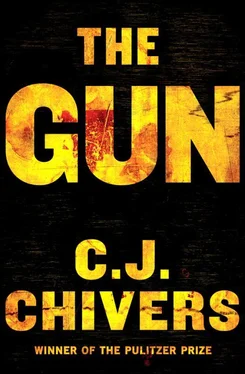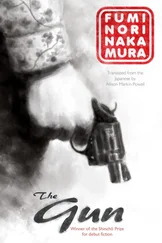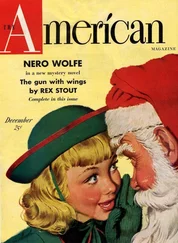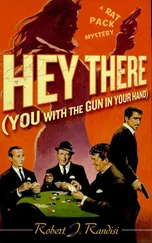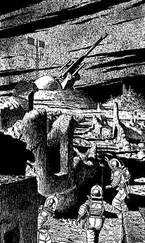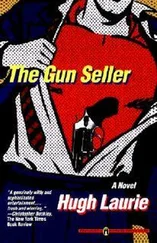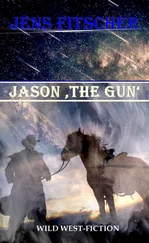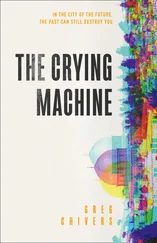C.J. CHIVERS
KANDAHAR, AFGHANISTAN
JULY 2010
CHAPTER 1
The Birth of Machine Guns
An Invention of No Ordinary Character
RICHARD J. GATLING WAS SEEKING BUSINESS. IN THE METICULOUS penmanship of a man born to a land-owning Southern family, he began a letter to President Abraham Lincoln.
It was February 18, 1864, late in the American Civil War and an extraordinary period in the evolution of firearms: dawn in the age of the machine gun and yet a time when officers still roamed battlefields with swords. At forty-five, Gatling was a medical-school graduate who had never practiced medicine, opting instead to turn his stern father’s sideline as an inventor into a career. For twenty years he had mainly designed agricultural devices. Dr. Gatling, as he liked to be called, came from a North Carolina family that owned as many as twenty slaves. 1But he had moved north to Indiana for business and marriage, and when the war began in 1861 he did not align himself with the secessionists who formed the Confederacy. He knew men on both sides. Far from his place of birth and away from the battlefields, he had taken to viewing the contents of the caskets returning to the railroad depot in Indianapolis. Inside were the remains of Union soldiers, many felled by trauma but most by infection or disease. Seeing these gruesome sights, Gatling shifted attention from farm devices to firearms, 2and to the ambition of designing a rapid-fire weapon, a pursuit that since the fourteenth century had attracted and eluded gunsmiths around the world. “I witnessed almost daily the departure of troops to the front and the return of the wounded, sick and dead,” he wrote. “It occurred to me that if I could invent a machine—a gun—that would by its rapidity of fire enable one man to do as much battle duty as a hundred, that it would to a great extent, supersede the necessity of large armies, and consequently exposure to battle and disease would be greatly diminished.” 3
Gatling did not fit any caricature of an arms profiteer. By the available accounts, he carried himself as a neat and finely dressed gentleman. He was kindhearted to his family and associates, soft-spoken at home, and self-conscious enough that he wore a beard to hide the smallpox scars that peppered his face. 4He made for a curious figure: an earnest and competitive showboat when promoting his weapon, but restrained and modest on the subject of himself. He was, his son-in-law said, “an exception to the rule that no man is great to his valet.” 5One interviewer noted that he professed to feel “that if he could invent a gun which would do the work of 100 men, the other ninety and nine could remain at home and be saved to the country.” 6He repeated this point throughout his life, explaining a sentiment that he insisted rose from seeing firsthand the ruined remains of young men lost in a fratricidal war. His records make clear that he was driven by profits. He never ceased claiming that compassion urged him on at the start.
Gatling was neither a military nor a social visionary. But he was a gifted tinkerer and an unrelenting salesman, and he found good help. His plans proceeded swiftly. Though there is no record of his having prior experience with weapon design, by late 1862, after viewing rival guns, drawing on his knowledge of agricultural machinery, and enlisting the mechanical assistance of Otis Frink, 7a local machinist, he had received a patent for a prototype he called the “battery gun.” “The object of this invention,” he told the U.S. Patent Office, “is to obtain a simple, compact, durable, and efficient firearm for war purposes, to be used either in attack or defence, one that is light when compared with ordinary field artillery, that is easily transported, that may be rapidly fired, and that can be operated by few men.” 8
Gatling’s battery gun, while imperfect in its early forms, was a breakthrough in a field that had frustrated everyone who had tried before. Since medieval times, the pursuit of a single weapon that could mass musket fire had confounded generations of military-minded gunsmiths and engineers. Gunsmiths had long ago learned to place barrels side by side on frames to create firearms capable of discharging projectiles in rapid succession. These unwieldy devices, known as volley guns, were capable in theory of blasting a hole in a line of advancing soldiers. They had limitations in practice, among them slow reload times and difficulties in adjusting fire toward moving targets and their flanks. Ammunition was a problem, too, as was the poor state of metallurgy, although this did not discourage everyone, and the lethal possibilities of a machine that could concentrate gunfire attracted would-be inventors of many stripes. One of the few highly detailed accounts of the early models suggests an inauspicious start. In 1835, Giuseppe Fieschi, a Corsican, rented an apartment on Boulevard du Temple in Paris. In a room overlooking the street he secretly constructed a frame of thick oak posts and attached twenty-five rifle barrels, all in a space of roughly a meter square. 9Each barrel was packed with multiple musket balls and a heavy charge of powder, then aligned to aim together at a point on the street below. Fieschi waited. On July 28, his intended victim appeared: King Louis-Philippe. Fieschi fired his makeshift device, and a volley flew from the apartment window and slammed into the king’s entourage. In the technical sense, the “infernal machine,” as his device came to be known in Europe, was both a success and a failure. It had a terrible effect. A piece of lead grazed Louis-Philippe’s skull, just above his face, and others cut down his company, killing eighteen people. But an examination of the gun later suggested that while it worked well enough as a tool for assassination or terror, it was hardly ready for the battlefield. Four barrels had failed to fire. Four others had ruptured. Two of these had exploded, scattering lead inside the assassin’s rented room and gravely injuring Fieschi, who was captured and saved from his injuries by the French authorities, to be executed later by guillotine.
Several hundred years of near stagnation in rapid-fire design, coupled with such mishaps, did not make machine guns an attractive idea to investors or customers alike. There was reason as well for potential purchasers to suspect nonsense in the claims of the movement’s dreamers, whose folly preceded Fieschi. In 1718, James Puckle, of London, had received an English patent for a rapid-fire flintlock that he proposed to manufacture in two forms: one for firing round balls at Christians, and another for firing square blocks at Muslims. The weapon, he wrote, was for “defending King George, Your country and Lawes, to defending yourselves and Protestant cause.” 10Puckle was nearly two centuries ahead of the machine-gun age. His proposal to subject Muslims to what he expected to be the crueler effects of square projectiles in some ways foreshadowed the punishing ways that rapid-fire weapons would be used to suppress indigenous tribes late in the nineteenth century, including columns of Mahdist fighters in British campaigns along the Nile. It also suggested that he knew next to nothing of ballistics. Investors steered wide. The gun never went into production.
By the Civil War, the new manufacturing capacity in the United States was moving the craft of gunsmithing into the realm of mass production, putting it firmly on the terrain of the speculator and engineer. Puckle’s fancy fell to more practical men. Since the 1850s, with improvements in metallurgy, toolmaking, and precision labor, there had been a flurry of fresh design efforts, and war in the 1860s had proven to be a stimulant to arms makers and their salesmen. A six-barrel rapid-fire weapon known as the Ripley had been conceived of in Troy, New York, although it had not made it out of the prototype phase. General Origen Vandenburgh, of the New York State Militia, had been conducting tests of his own line of volley guns, and envisioned what he called “their life-destroying efficiency at every point.” An arms race had begun, although initially it was driven more by private designers and profit-seekers than by armies or governments. “We involuntarily look for the most deadly weapon by which men can destroy each other in the open field, and not without ample cause, for decisive struggles, on which national results will depend, will be decided there,” General Vandenburgh told an assembly of British officers in 1862. 11The general’s loyalty to the nation seems to have been less well developed than his desire for sales receipts. After the United States military refused to adopt his weapon, saying, among other things, that it took nine hours to clean after firing, the general took it to England, found a manufacturer, and offered his weapon’s “life-destroying efficiency” to the Confederacy, which bought at least one. He was not the only Northern businessman supplying the enemy. A firm in Rochester, New York, offered a new volley gun, the Requa, with twenty-five .58-caliber barrels arranged in a single row. The Confederate Army had incorporated a few of these weapons into its forces as well; a quick and well-supplied crew could fire seven volleys through a Requa in a minute, 175 bullets in all. 12Another gun, the Union Repeating Gun, fired repeatedly through a single barrel by the means of a hand crank. Then came Gatling.
Читать дальше
